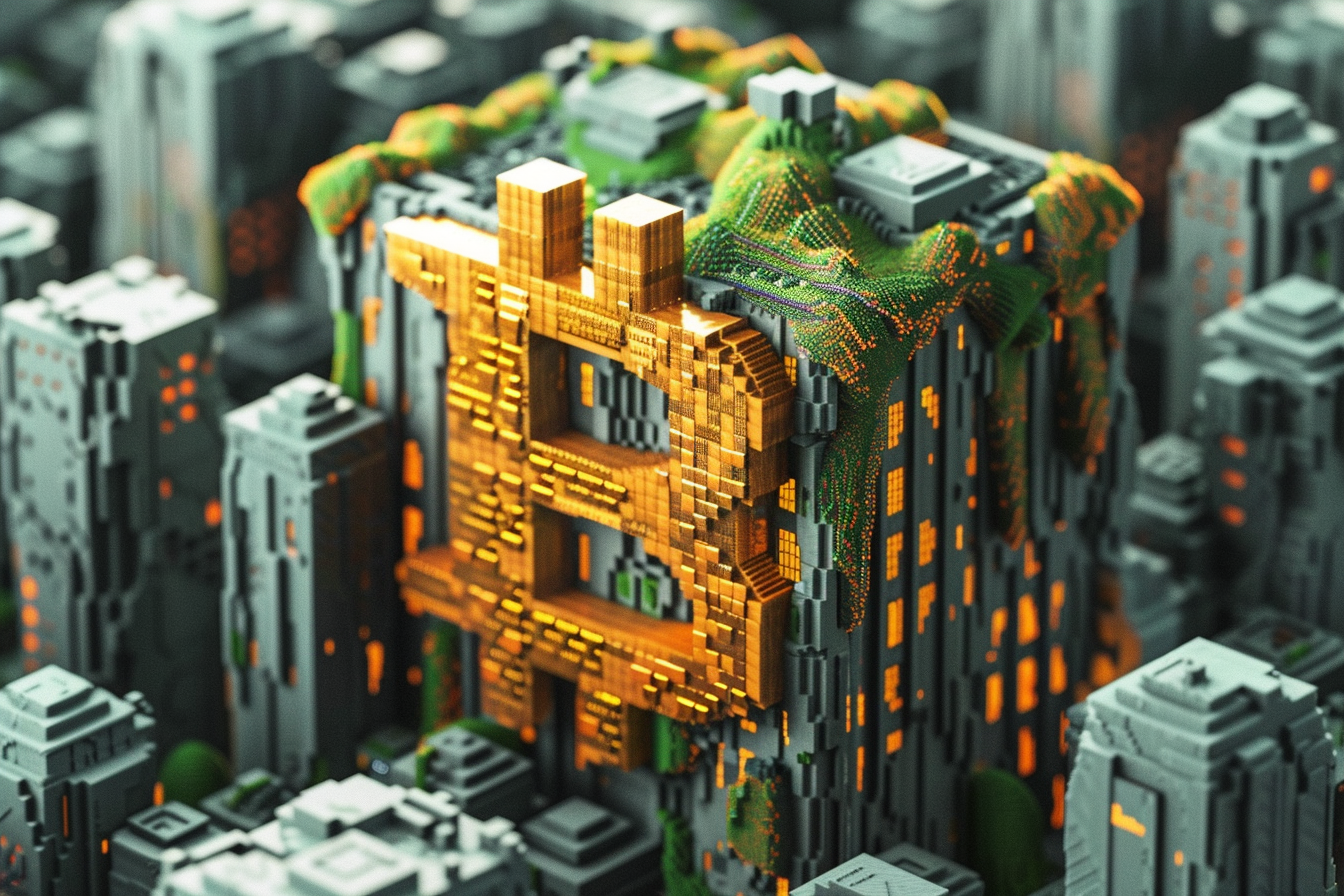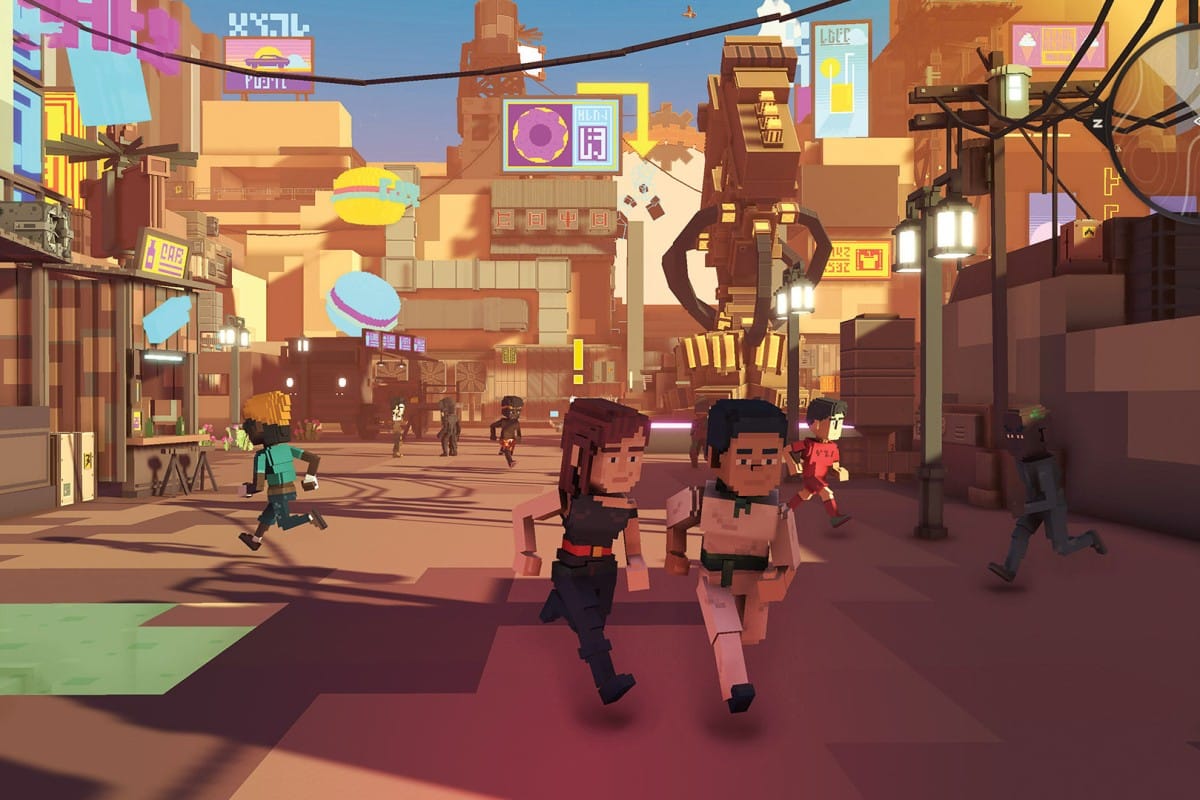Table of Contents
2022 has seen a heavily sustained bear market, with liquidity drying up in many sectors of crypto especially NFTs. Many PFP projects have seen floor prices tank, and apart from Goblin Town, NFT Twitter has gone rather quiet. Retail interest in NFTs has died down significantly since last year, leaving the NFT landscape looking rather bleak for now.
Away from the Ethereum main stage, however, exists a community that continues to thrive, not tied together by any project but channelling a strong presence on Twitter nonetheless. Enter the Tezos blockchain, an underdog network that hosts a passionate art community, with a treasure trove of amazing art pieces often overshadowed by Ethereum’s limelight.
No shortage of talent on Tezos
In early 2022, when I began exploring the possibility of minting my own art as NFTs, I was directed to Tezos as a more affordable option compared to Ethereum. Being new to the space, I was not a fan of Ethereum’s expensive gas fees and wanted to try out different alternatives.
What struck me immediately was the difference in tone and focus of conversations in Tezos and Ethereum. While the hype in Ethereum mostly revolved around the next big flip, the conversations in Tezos centred on art, artists, and people trying to sell their art. This is not to say that Ethereum does not have its fair share of good art; there are definitely many great works of art and artists whose work makes waves. But as a newcomer, with most of the attention on Ethereum directed towards PFPs, I took NFTs to be synonymous with them. The Tezos scene was the complete opposite of that and immediately changed my impression of what an NFT could be.
Part of that change in mindset can be attributed to the quality of work on Tezos. Scrolling through Objkt, one of Tezos’ main marketplaces, there was no lack of high-quality illustrations, pixel art, and photographs to browse through. I spent hours looking through different artists on Twitter, amazed at what I was seeing, saving many pieces to my Pinterest moodboards. Some of the Tezos pieces I came across felt like they belonged in a gallery, and the quality of work I managed to find compelled me to express my support for these artists beyond a simple like and share. I bought some $XTZ off an exchange, transferred it into my Temple wallet, and began collecting pieces off of Objkt as a way to support the vibrant scene I was witness to.
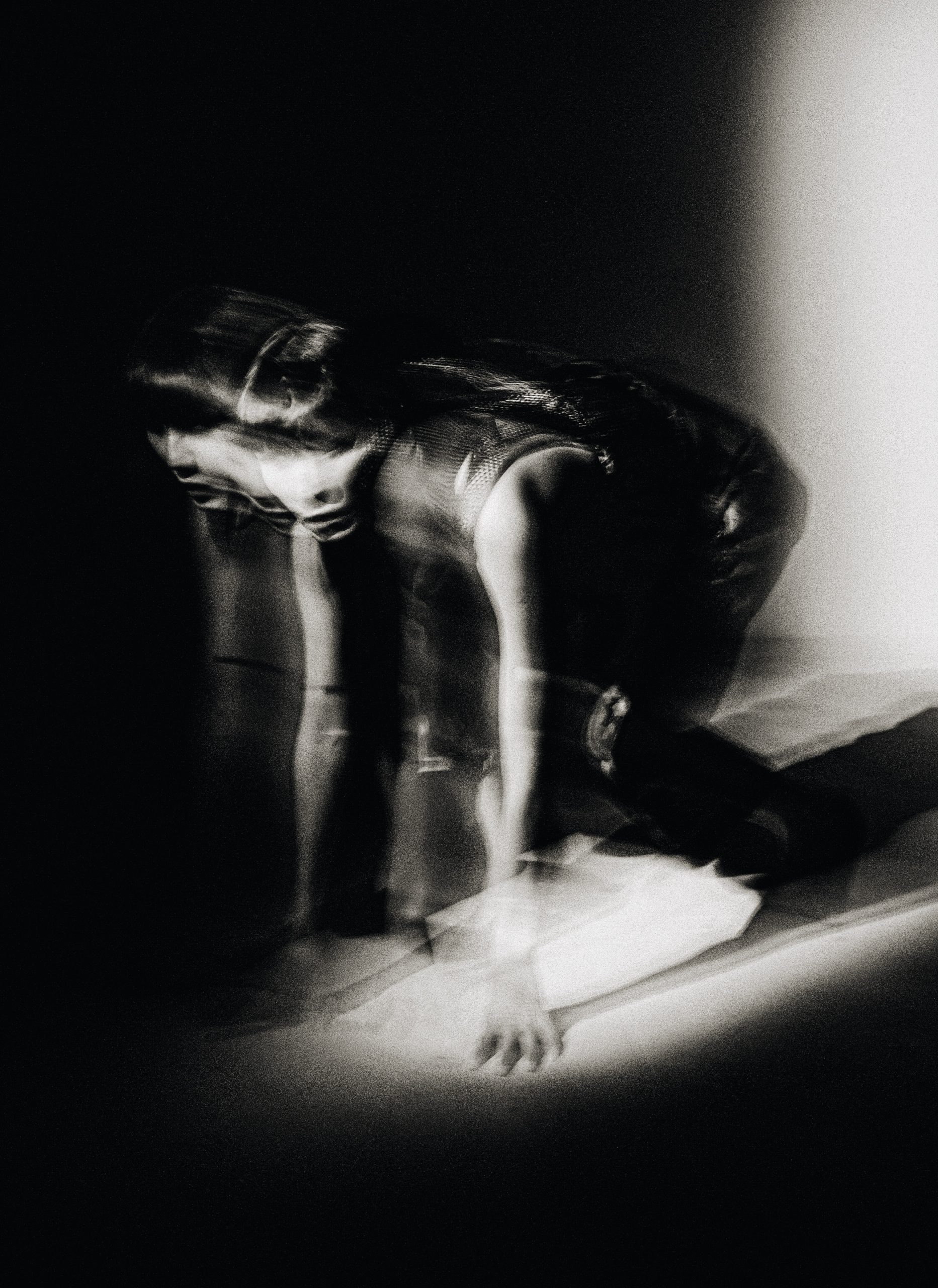
“Passive Aggressive” by Dashxcrash, a piece that I fell in love with at first sight.
Being a collector feels different
Earlier this year, I wrote a piece on why I believed NFTs were a way for artists to market their works to the world with greater accessibility, bypassing traditional gatekeepers to reach their target audience over Twitter as opposed to within the structures of a gallery. Having become a collector of Tezos NFTs since then, I now hold that view with even greater conviction, albeit not in the same way as before.
Read more: Art Has a Money Problem. NFTs Might Be Able to Fix That
In Web2, as a fan of works I saw online, I would like their posts and share them or retweet them as a way to increase their visibility. After all, these are actions that cost nothing other than my time. But for most artists, exposure can only go so far, and only a handful of people will ever make it to the point where exposure can be monetised in the form of sponsors or advertising.
Web3, on the other hand, presents an avenue for people to express the admiration they have for a piece of digital work to the extent of purchasing it (or an edition of it) from the artist. This serves as a way for people to support creators’ works directly, financing the time it took for them to make the piece.
But beyond supporting creators, what may not be apparent is that collecting an NFT establishes a special relationship between the collector and the work which is hard to put into words. This is something I did not realise myself until I collected my first piece and witnessed the transaction take place, dropping the piece firmly into my wallet.
Having to put down a sum, no matter how small, and go through the process of approving the transaction to collect it made me feel far more invested in supporting the work I liked to see than a simple Patreon subscription or donation ever would. The blockchain’s recognition that I truly did own this otherwise infinitely replicable JPEG made me feel a sense of belonging to the work, like I was engraving my support for the kind of art I liked and wished to see more of.
A gold mine for collection… at less than gold prices
As with any blockchain, Tezos is not without its fair share of issues. Apart from the slow block times and lack of value accruement in the chain itself, Tezos has had to struggle with a culture of listings made at extremely low prices, with some pieces even going for less than 1 Tez (at the time of writing, 1 Tez = US$2.04). Part of this can be attributed to the fact that most pieces on Tezos are editions, allowing for artists to sell each piece to a wider audience. Another reason for this may be that many artists on the chain come from developing countries like Indonesia; the parity of 1 Tez for these artists goes a much longer way for these artists than it would for those living in developed countries.
Admittedly, as a creator myself, I found it hard to compete with such prices on Tezos, especially given my medium of choice, photography, being more niche than other mediums and harder to sell to the current NFT crowd. The issue of low market prices was raised in the recently held “TEZmeetsETH” space, where some expressed their frustrations and discussed how Tezos art could be valued higher.
In many ways, not unlike Ethereum, the bigger names on Tezos tend to dominate, with many collectors flocking to a handful of artists while the rest struggle to sell their works above 1 Tez. Adding on the fact that liquidity in the Tezos blockchain pales in comparison to Ethereum, selling pricier works becomes a challenge.
In contrast to Ethereum, Tezos works are generally sold as editions, which drives the value of each minted work down to a certain degree. While there have been attempts to change this, such as the upcoming “1/1 on Tezos” community event happening in July, the combination of the prevailing low-price Tezos culture and this year’s bear market make it difficult for attitudes to change in times of low liquidity.
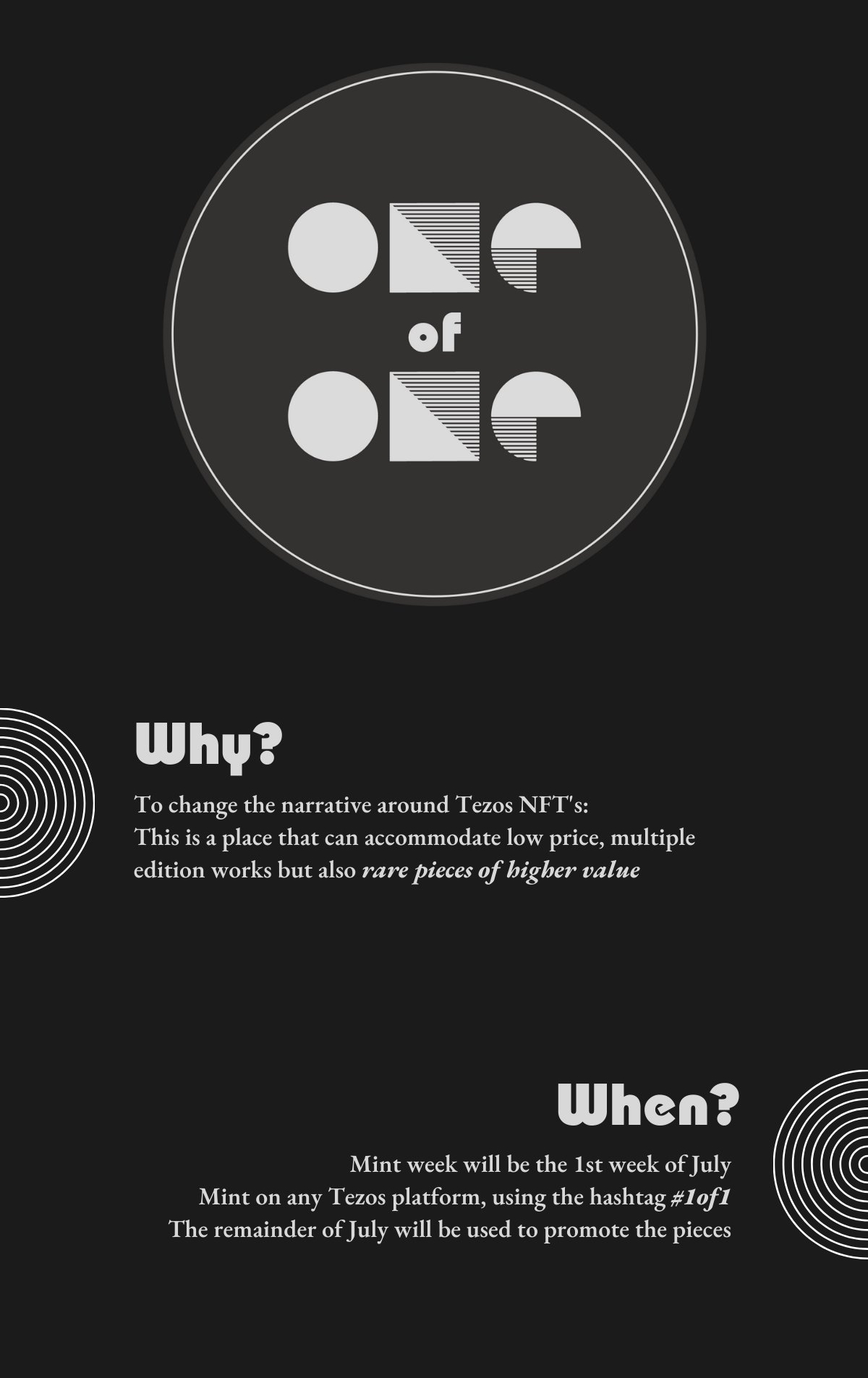
Part of an infographic that details the upcoming “1/1 on Tezos” event.
The experience of collecting is priceless
Perhaps I would be fooling myself if I did not admit to being stingy or bitter at first, believing that I should wait until I have made a sale of my own before reinvesting my profits into other artists. However, I eventually came to realise that this line of thinking was part of the problem.
Artists on NFT Twitter typically gather around big-name collectors like Jagged and Benjamin Bitcoin, who frequently start shill threads and follow through by purchasing something from the replies. This is to be expected; people will naturally flock to where the money lies. But even whales need to look after their own finances, and the handful of famous collectors can only collect so many pieces before they lose the attachment they once held for each piece. In that sense, the act of collection in this manner becomes more of a charity from whales to small creators and a competition of who can appeal to their tastes the most.
Read more: “NFTs Use Technology Better Than Art Does”: Shavonne Wong on Why PFP Hype Isn’t Deterring Her Work
But the future of NFT collection does not have to be this way. If anything, having only a few big names collect all the pieces would be anything but decentralised, as people with all the money hold all the power and own all the art in the space.
Instead, a more sustainable future would involve peers collecting from each other. The labels of “collector” and “artist” are merely transient, fluid concepts; there is nothing stopping one from becoming the other. While art, Web3 or not, is definitely a luxury expense, my experience on Tezos has shown me that there is more joy in letting go of the liquidity we own in exchange for the feeling of owning works that speak to us and coming away from the transaction with the knowledge that we are supporting the art we love with our wallets.
Community is the best utility we can ask for
To those who have been in crypto since 2016, it may seem strange that a thriving community exists on Tezos, a coin that saw its heyday prior to the 2018 crash and has seen its fair share of controversy. While many altcoins from that era touted themselves as the answer to Ethereum’s issues, most of them, including Tezos, have struggled to stay relevant since then, with Ethereum still standing the test of time in terms of volume and value accruement.
Yet, it is ironically amidst this lack of hype and attention from the mainstream crypto crowd that the Tezos community is able to thrive. Not only is Tezos host to many talented artists and brilliant works of art but also niche communities of creators, such as “Photez”, a community of photographers on Tezos. Without the usual noise of crypto Twitter to draw attention away from artists, art on Tezos is able to take centre stage in ways that cannot be replicated in Ethereum.
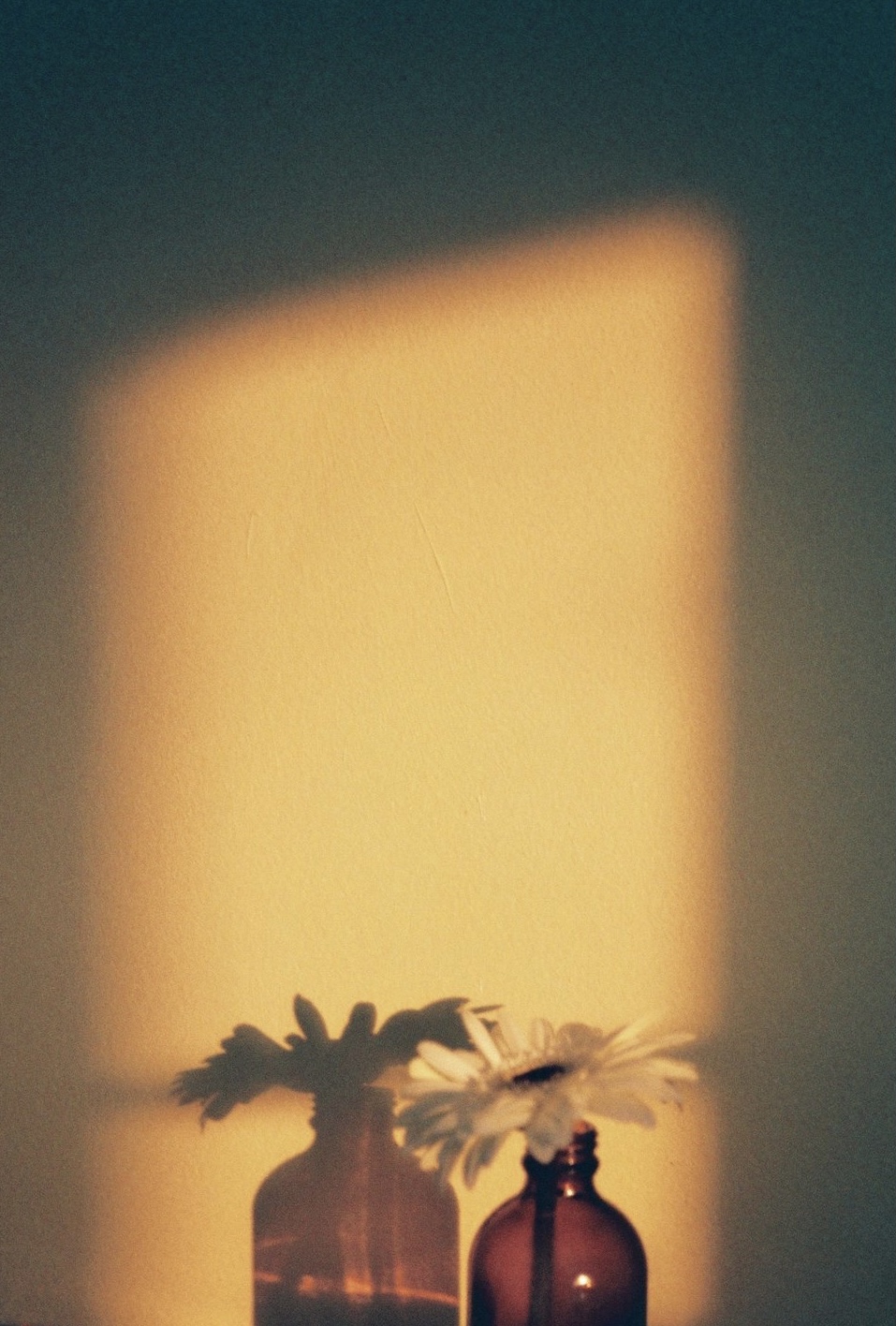
“Almost Sunset” by cybergeek.tez, an example of beautiful photography on Tezos.
Tezos also has a bevvy of community-led events, such as the aforementioned “1/1 on Tezos” event and #tezos4tezos, the event in which I made most of my Tezos purchases. Seeing most of the works listed for the event go for under 1 Tez (part of the rules of the event) felt like a steal, and I could not help but spend all my existing $XTZ on some amazing art.
Read more: This Singaporean Millennial is Creating NFTs to Build a Real-World “Toasty” Home Decor Brand
What does buying these works net me in return? Nothing. All of the art I purchased lacks any “utility”, a concept that may be familiar to those who come from the PFP side of NFTs. Given that PFPs may not place as much emphasis on the aesthetic quality of their NFTs, “utility” is a word often tacked on to projects in an attempt to convince investors of their value in the long run. In the case of art, however, the Tezos art scene demonstrates that art itself can be the utility, and when people come together to appreciate something beautiful, that is perhaps the best form of utility we can get out of it: something that speaks not to the wallet, but to something deep within us.
What does this mean for other blockchains?
While I am not particularly wealthy by any means, collecting over 20 pieces on Tezos has certainly taught me a lot about the way NFTs can benefit the art world and what might be lacking in the space.
Moving forward, I believe that peer-to-peer collecting would make the art economy a lot more sustainable. Of course, collecting is subjective to one’s financial situation, but keeping the chain of collection going is certainly something to be encouraged.
Frustratingly, the ability for one to sell one’s art depends largely on marketing, an issue that plagues Tezos as much as it does other blockchains. Some of my most fascinating finds were the result of my searches through the #tezos4tezos hashtag, and it felt unfair that these artists were struggling to sell as a result of their poor marketing skills.

“Reflex” by Flashdove, my current profile picture on Twitter. A fascinating find with few buyers.
But good marketing is never a substitute for a good product, and for collectors, the best find or next piece you may fall in love with may be buried somewhere deep. Amidst the noise of Twitter, it may be best to dive in and discover the next work of art to fall in love with yourself.
Read more: Admit It, NFTs Are Ugly and Expensive
Most importantly, the idea of “utility” in art seems poorly fashioned on from the PFP scene, with many mistaking art collecting as a short term flip. Perhaps, with time, the market may mature to a point where collectors can look beyond the financial value of NFTs and develop better tastes for art. While JPEGs are generally illiquid assets, there is nothing wrong with buying an NFT just because you like the art and want to hold on to it forever.
Tezos: A great place to start collecting art
If you remain unconvinced of the reasons for art collection, Tezos’ low prices, virtually non-existent gas fees, and thriving art community may be a good place to start. You can even create your own virtual gallery, something that I have decided to do for myself.
As with most flashy things, art is still a luxury expense. But for me, it is a luxury expense I have tried and come to believe in. Perhaps if you try it, you too may be mesmerised by what you might find.
Click here to view the writer’s Oncyber gallery of collected Tezos NFTs.



